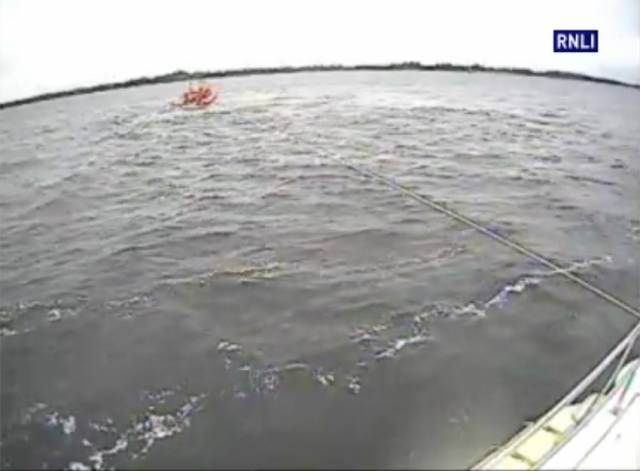#RNLI - Lough Ree RNLI’s lifeboat crew were alerted by the Irish Coast Guard to two separate incidents on Saturday 27 May.
The first alarm was raised at 11.04am when two people on board a 32ft motor cruiser ran aground north-west of Inchbofin Island, near the eastern shore of the lake.
Lifeboat operations manager Tony McCarth, assisted by shore crew Bernard Larkin and Denis Begley, had Lough Ree lifeboat The Eric Rowse launched and underway in less than 15 minutes with crew members Stan Bradbury, Kieran Scullion and Stewart McMickan on board.
Weather conditions at the time were difficult, with heavy rain and a strong Force 4 breeze from the north-west. Visibility was poor and there was a moderate swell on the lake.
The Eric Rowse was alongside the casualty vessel at 11.31am, with the lifeboat crew checking that all on board were uninjured and wearing life jackets. Once established that the vessel was not taking on water, the lifeboat towed it off the sandy shoal to safe navigable water.
All equipment on the boat was confirmed to be in good working order, and the people on board were able to continue their journey to Lanesboro at the north end of Lough Ree.
The lifeboat crew returned to station at Coosan Point, where the shore crew prepared The Eric Rowse for service once again by 12.30pm.
Less than three hours later, 3.15pm, the volunteers were alerted again – this time to assist eight people aboard a hire cruiser aground north of the Black Islands, at the north-east shore of Lough Ree.
Launch authority Billy Henshaw and shore crew member Bernie Larkin launched the lifeboat at 3.26pm, crewed again by volunteers Bradbury, Scullion and McMickan.
The lifeboat crew reached the cruiser at 3.49pm and proceeded to conduct the usual checks before towing the cruiser to safety. The eight people on board then continued their journey south to Athlone, and the lifeboat crew returned to the station, where The Eric Rowse was reported ready for service again at 4.50pm.
Speaking later on the day, Tony McCarth said: “We were happy to be able to assist in both callouts today and to help these 10 people continue to enjoy their weekend on Lough Ree.
“Heavy rain leads to poor visibility on the lake, which can make locating navigation markers difficult, even in calm conditions. We remind all users of the lake to ensure they check the weather forecast and seek local advice on likely conditions on the lake before leaving harbour.”
































































